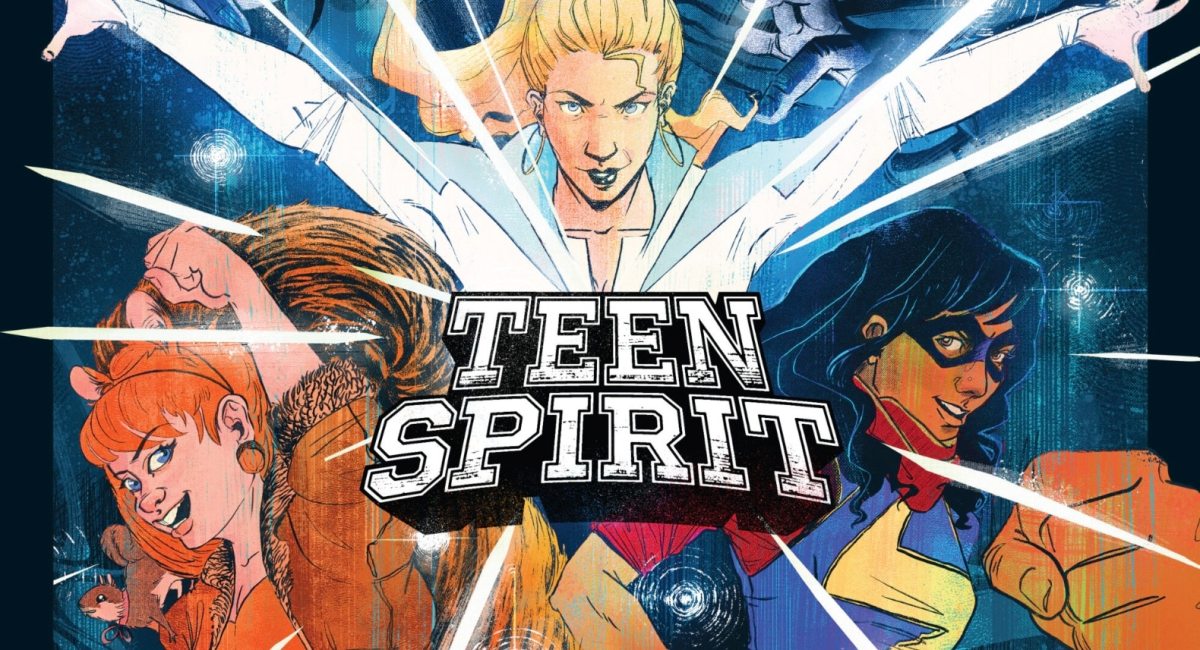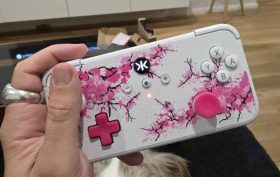Unmatched: Teen Spirit might be one of the best additions to the entire Unmatched series. For those unfamiliar, this board game system pits 2-4 players against each other in skirmish battles, with every player taking control of a central “hero” with card-based abilities. Past iterations of Unmatched have featured legendary heroes and villains from classic stories – folks like Sherlock Holmes, Dracula, The Invisible Man, Robin Hood, and Sinbad. The latest series releases have been Marvel-focussed, with multiple packs introducing characters like Spider-Man, She-Hulk, Ghost Rider, Daredevil, and more.
Teen Spirit is a standalone Marvel pack that introduces you to four fresh fighters: Ms. Marvel, Squirrel Girl, Cloak, and Dagger – each of which play differently, and each of which also integrates into past Unmatched packs for wild crossover battles. (As an aside, the core hook of each Unmatched box is that they can be played standalone, or mixed and matched with any other Unmatched set.)
The array and diversity of fighters in Teen Spirit is grand, making it one of the most well-rounded Unmatched sets, with plenty of opportunity for experimenting with battle mechanics and traversal, and planning out your path to victory.
Unmatched: Teen Spirit – Setup and How to Play

Setup for Unmatched: Teen Spirit is very easy, and while the rules do have quirks and complexities, the manual is simply written, and easily parsed. To kick off a round of Teen Spirit battles, all you need to do is set up the playing board (all your battles are set on a Navy Pier) and have each player choose a hero. Once this is done, players grab their action cards (which determine what moves can be taken in battle), a damage tracker, their hero figure, and any associated sidekicks (in this pack, only Squirrel Girl has sidekicks, in the form of small fighter squirrels). They also draw five cards for a playing hand.
Then, everyone should be good to go.
Unmatched: Teen Spirit is a very tightly designed game, in that there’s barely any filler in the action. Once your hero figures are placed on the board, you’re locked into a fast-paced battle where anyone could win, based on how they deploy cards, and how they use the environment to their advantage.
Read: Stella: Dixit Universe board game review – Oh so dreamy
Each turn, players will take two actions: Manoeuvre, Scheme or Attack. These are essentially: draw a card and move, play a scheme card for benefit on the battlefield, or attack your opponents once you’re in proximately.
While you begin at opposite ends of your playing board, it isn’t long before you’ll be in range for an attack, and enemies will be in your range. Then, the real fun of Unmatched starts, as you initiate a battle that could have a range of outcomes.
Battle Mode: On!
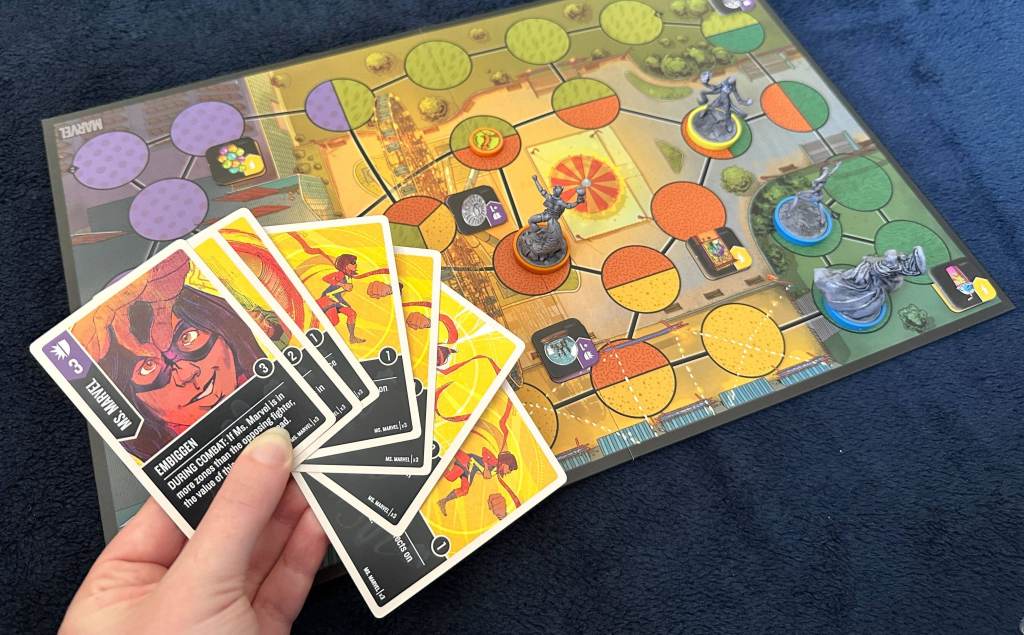
Tactical strategy plays a key part in how you win during Unmatched, with a balance between defence and attack required to approach enemies. You need to ensure your action cards are useful, and that they could potentially “win” your combat skirmishes. Players can attack and enemies can defend, so it’s a good idea to spend time analysing your cards every turn, ensuring you’re maximising your damage wherever possible.
There is an element of chance in these skirmishes, in that some cards are more powerful than others – for example, if you draw Ms. Marvel’s Embiggen card while you’re on a space with the most “zones” (represented by colours) your attack is boosted significantly, almost guaranteeing a hit.
But even with chance as an aid, the more important thing in Unmatched is tactical thinking. Knowing when to attack, when to defend, and when to retreat from the battlefield. While you can pursue aggressive tactics, every hero only has a limited amount of health – so you’ll need to ensure you’re protecting your heroes as much as you’re romping across the battlefield to attack others.
Again, this requires deep analysis, as Unmatched‘s combat system is very hearty, with multiple opportunities to attack and defend in tense circumstances.
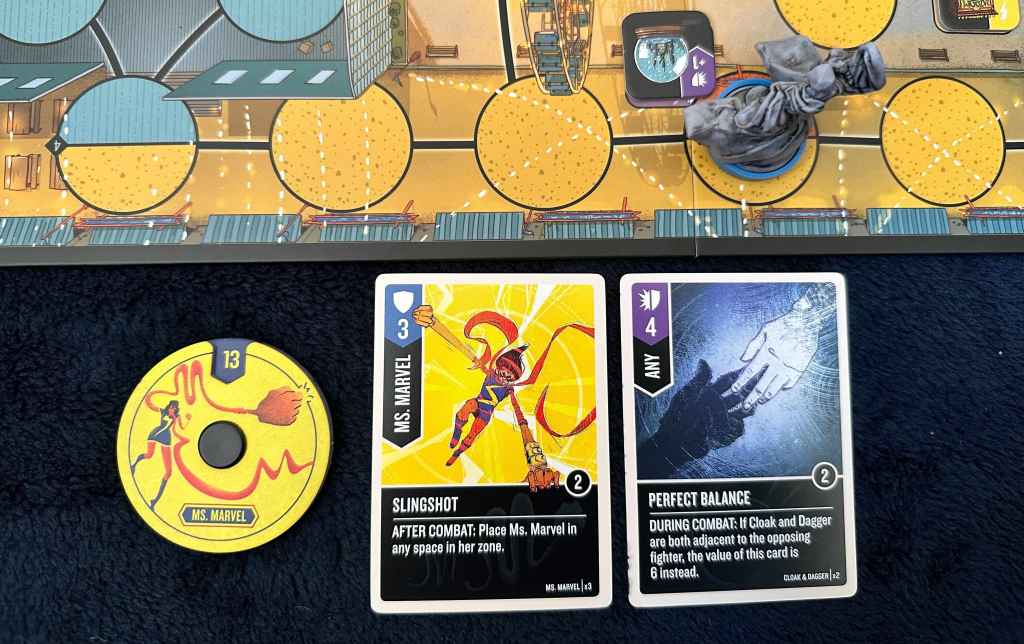
Take this play, for example. Cloak has played Perfect Balance against Ms. Marvel, which inflicts four damage (and it can also be used to defend, based on the symbol in the upper left corner). During combat, if Cloak and Dagger are positioned adjacently to Ms. Marvel, the card’s damage becomes six. Luckily in this case, Cloak and Dagger were not adjacent to Ms. Marvel – but with this hero playing Slingshot in defence, and this card only being worth three defence, she still takes one damage for the encounter. Afterwards, Ms. Marvel can retreat to another space within her zone.
Tactics deployed will need to change based on attack and defence, with dual attacking/defending cards saved for just the right moment, and more risky attacks being saved for surer situations. With a need for balance, Unmatched‘s tactical battles are a real blast. No matter which hero you choose, you’ll have a wealth of options for play.
Ms. Marvel vs. Squirrel Girl vs. Cloak & Dagger
While there are technically four fighters included with this game, there are only three playable card decks – as Cloak and Dagger share a deck, and are controlled by a single player. They’re just one of the reasons why Teen Spirit feels so unique.
As a single fighting team, Cloak and Dagger work very well together. Both have lesser health than their opponents (8 health each) and this requires quick thinking to overcome, as supported by moves in their card set. Some action cards allow Cloak and Dagger to trade places, others require them to be in certain tactical positions on the board to maximise damage.
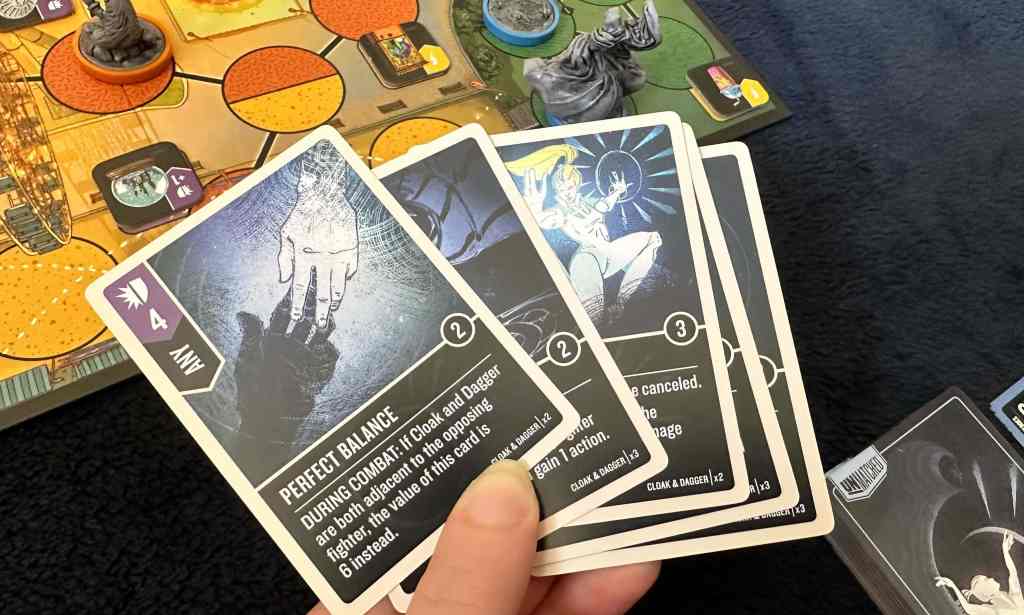
Cloak and Dagger also share healing cards, and one can occasionally take damage for another. There’s also a special move from Dagger – Lightforce Barricade – that can cause devastating damage, at the cost of health taken. To play this card, you should ensure you have enough healing abilities handy, or you may sacrifice Dagger to ensure Cloak survives. As long as one hero of this set remains on the battlefield, players still have a chance to win.
Ms. Marvel is also a very cool fighter, with a long range for attacking from afar, and multiple abilities that allow her to take advantage of her environment. Positioning is very important when playing Ms. Marvel as she can maximise her attack while standing on certain coloured tiles, and many of her moves have high damage, based on comics-accurate abilities. (As in the comics, she’s stretchy.)
Squirrel Girl was my favourite of the set. Her abilities all revolve around summoning squirrel fighters to the battlefield, with their positions and movement allowing her to pull off high-powered attacks.

With four or more squirrels on the battlefield, a range of special moves can be deployed – including one that cancels the negative effects of player attacks. While squirrels go down with one hit, and these hits obliterate all squirrels within a single space, using these summoning abilities tactfully can lead to a wonderful and whimsical victory.
There’s just something inherently lovely about the ability to summon squirrels. It’s silly, and over the top, and exactly what Unmatched needs.
Onwards, to victory
On the strengths of these fighters, and the genuinely excellent mechanics backing the entire Unmatched series, Teen Spirit is an essential board game. Realistically, you can get a similar experience in any of the Unmatched games, but there’s a great mix of characters in this particular set, and clever tactics associated with every hero.
With zero filler and fast-paced action that feels approachable for players of all experience levels, this game is a fun blast of comic-inspired battles that bursts with personality, and provides ample opportunity for challenge and competition.
Five stars: ★★★★★
Unmatched: Teen Spirit
Players: 2-3
Designer: Rob Daviau and Justin D. Jacobson
Publisher: Restoration Games
Release Year: 2023
A copy of Unmatched: Teen Spirit was provided by VR Distribution and Rocket Comms for the purposes of this review. GamesHub reviews are rated on a 5-point scale. GamesHub has affiliate partnerships. These do not influence editorial content. GamesHub may earn a small percentage of commission for products purchased via affiliate links.
